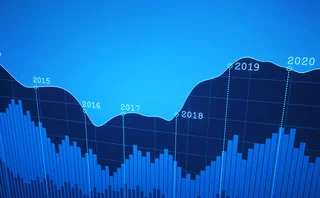
Libor forecast to lose status as key benchmark
Libor's days as a key benchmark for a variety of derivatives and as a measure of interbank lending rates may be numbered, a leading interest rates strategist has suggested.
Addressing reporters at a press briefing on the economic outlook for 2009, Mustafa Chowdhury, head of US interest rate research at Deutsche Bank in New York, claimed that since the turbulence in global credit markets took hold in late 2007, Libor has proven to be an increasingly inaccurate barometer of interbank lending and may soon come to be regarded as obsolete.
"Libor and overnight indexed swaps (OIS) spreads are tightening, which is reassuring, but the definition of what Libor means is changing as governments get more involved in the system. It used to reflect interbank credit but now it is more a reflection of transactions in the credit risk sector of the market, since most US banks have access to other sources of funding besides Libor, such as Federal Reserve funds," said Chowdhury.
Libor established itself as a crucial reference rate for a multitude of financial products as varied as interest rate swaps, adjustable rate mortgages and corporate loans soon after the index was first compiled by the British Banking Association (BBA) in 1986.
The benchmark first came under scrutiny in late 2007 when its long and stable correlation with OIS began to break down, with spreads between the two indexes blowing out to more than 100 basis points during September and December and almost hitting 100bp once again in May 2008.
Critics alleged that some contributing banks on the 16-strong Libor panel were deliberately downplaying the true cost of financing in an effort to assuage concerns about their perceived creditworthiness, a charge the BBA rejected.
Chowdhury went on to speculate that the root of the "huge problem" lies in a perceived gap in the relationship between stated interbank lending, which remains reflected in Libor, and funding from other sources such as the Federal Reserve, the cost of which has increasingly been reflected in OIS prices.
"That poses a challenge for the risk management of many financial institutions, but a lot of this lending will eventually evolve to another index that will be more connected to treasuries," Chowdhury stated. "There will be more treasuries in the market, most points in the curve will be liquid and there will be issuance in sectors where we have not had issuance before, so it won't be very difficult to create indexes related to treasuries, so we will see the replacement of Libor-based lending."
Among other forecasts made for the 2009, Deutsche Bank chief US economist Joseph LaVorgna, revealed expectations for US GDP to contract by 3.7% in the first quarter and 2.8% in the second quarter, before recovering in the second half of the year. Nonetheless, GDP is expected to end the year down 2%, the worst performance for the US economy since World War II.
See also: Libor under attack
BBA begins Libor consultation
Libor's true colours
Only users who have a paid subscription or are part of a corporate subscription are able to print or copy content.
To access these options, along with all other subscription benefits, please contact info@risk.net or view our subscription options here: http://subscriptions.risk.net/subscribe
You are currently unable to print this content. Please contact info@risk.net to find out more.
You are currently unable to copy this content. Please contact info@risk.net to find out more.
Copyright Infopro Digital Limited. All rights reserved.
As outlined in our terms and conditions, https://www.infopro-digital.com/terms-and-conditions/subscriptions/ (point 2.4), printing is limited to a single copy.
If you would like to purchase additional rights please email info@risk.net
Copyright Infopro Digital Limited. All rights reserved.
You may share this content using our article tools. As outlined in our terms and conditions, https://www.infopro-digital.com/terms-and-conditions/subscriptions/ (clause 2.4), an Authorised User may only make one copy of the materials for their own personal use. You must also comply with the restrictions in clause 2.5.
If you would like to purchase additional rights please email info@risk.net
More on Economics
Global investment outlook: 2026 and beyond
Broadening, steepening and weakening: Franklin Templeton’s top investment ideas for 2026 and beyond
Webinar – Nowcasting the US economy
Join CME Group Chief Economist, Blu Putnam, as he shares insights using alternative data and nowcasting to monitor developments in the US economy.
Fed Funds Futures in a Post-ZIRP World
As the FOMC returns to more active management of its key target rate, Federal Funds futures have experienced dramatic growth.
Challenging economic pessimism: an optimistic note
A contrarian, upbeat view of the long-term economic outlook
Economists, like hedge fund traders, need open minds
Economists, risk managers and traders must learn the lessons of crisis, says Kaminski
Fed wrong not to start QE tapering, says UBS economist
The surprise decision by the Federal Reserve last month not to scale back its quantitative easing programme will create more volatility, says economist







